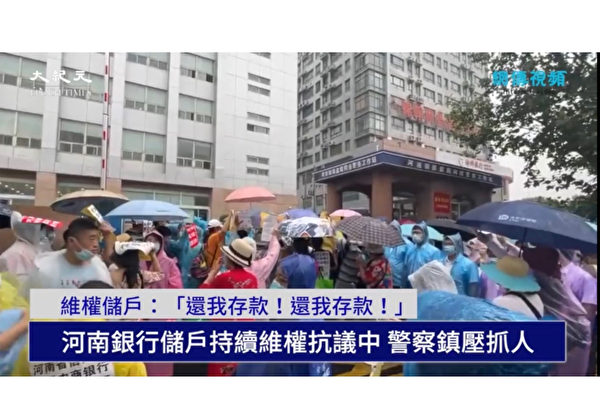China’s small banks are currently facing a savings and loan (S&L) crisis. Over the course of a week leading up to June 24th, 40 Chinese banks have been absorbed and disappeared by larger financial institutions. This rate of bank closures is even faster than during the most severe period of the savings and loan crisis in the mid-1980s in the United States.
Since 2019, several medium-sized banks in China have declared bankruptcy and credit defaults, with well-established investment management companies and state-owned financial enterprises also facing closure. Despite years of various reforms and integrations by Chinese regulatory authorities, similar to the heavy-handed measures taken to salvage the struggling real estate market, the Chinese Communist Party (CCP) seems to be at a loss when it comes to the financial sector.
One of the most complex issues lies with China’s small rural banks. Among the 40 institutions that recently disappeared, 36 were located in Liaoning Province and were absorbed by a new lending institution called the Liaoning Rural Commercial Bank.
According to The Economist, there are approximately 3,800 such institutions spread across rural China with assets totaling 55 billion yuan (around 75 billion US dollars), accounting for 13% of the entire banking system. These banks have long been poorly managed, accumulating a large number of non-performing loans. Many banks took risky ventures by providing substantial loans to real estate developers and local governments.
In recent years, revelations have shown that some banks have up to 40% of non-performing loans on their books, a figure considered a conservative estimate, with the actual situation potentially being even worse.
Cleaning up this mess is an extremely challenging task. Many of these banks were established to serve small businesses, especially those in the poorest areas of China. Banks trapped by toxic debts find it difficult to extend new loans to businesses, which could harm fragile enterprises and local economic growth.
Meanwhile, in June, the CCP issued a notice for a 30-year retrospective tax payment. Analysts believe that due to financial difficulties, the CCP is attempting to significantly increase income confiscation. Meanwhile, financially troubled local governments are taking advantage of the situation, creating a situation akin to highway robbery, leading to numerous small and medium-sized private enterprises having to declare bankruptcy.
The weakest performing small banks have now endangered the CCP’s central concern for social stability.
Massive fraud has led to several banks freezing withdrawals, causing depositors in a provincial capital to take to the streets to seek redress.
In 2022, four village banks in Henan Province were involved in a $4.2 billion fraud case, resulting in about 600,000 people losing their deposits, raising concerns among analysts about the stability of rural banks.
Depositors from Henan village banks have taken to the streets in pursuit of recovering their life savings, but have been harshly suppressed by local authorities under the guise of counterterrorism. Many depositors were arrested, beaten, illegally detained, and placed under strict surveillance by the authorities.
According to the “China Dissident Monitoring” project of the Washington, DC-based Human Rights Organization “Freedom House,” economic protest activities in the fourth quarter of 2023 increased by 127% compared to the previous year, reaching 805 incidents.
State-level interventions also pose risks, as rumors of troubled banks, restructuring, or mergers could lead to bank runs.
The Economist reports that one of the methods to resolve the financial crisis in China is through stable but marginal capital restructuring. Local governments are issuing special-purpose bonds for various purposes, including assisting banks. Although only 218 billion yuan of last year’s revenue flowed to local banks, equivalent to 1% of their risk-weighted assets, more funds have been disbursed in some severely affected provinces. For example, from December 2020 to May this year, Liaoning Province in northeastern China injected 17% of its special bond revenue into its banks.
Since April, the People’s Bank of China has issued over ten warnings that the bond bubble could burst, leading to financial market instability and undermining China’s uneven economic recovery. Small and medium-sized banks are particularly susceptible to interest rate risks: once rates begin to rise, these banks will incur huge losses and face the risk of bankruptcy.
S&P Global estimates that completing this project will take ten years. The Economist reports that supporters believe a reduction in the number of large banks will make supervision easier, but critics argue that it is just a gimmick. They claim that merging dozens of non-performing banks will only create larger, more troubled institutions.
The Economist analysis states that the regulatory authorities are pushing for mergers as they lack the mechanism to allow banks to fail and exit the market. During the securities and loan crisis, US legislators passed the Financial Institutions Reform, Recovery, and Enforcement Act, which provided a way for assets of small loan companies to be sold off, aiding in an orderly resolution of the crisis.
In June of this year, a legislative meeting in Beijing proposed a draft law called the “Financial Stability Law,” but it was once again postponed. The Economist points out that such inefficiency has become a common phenomenon in CCP decision-making.

